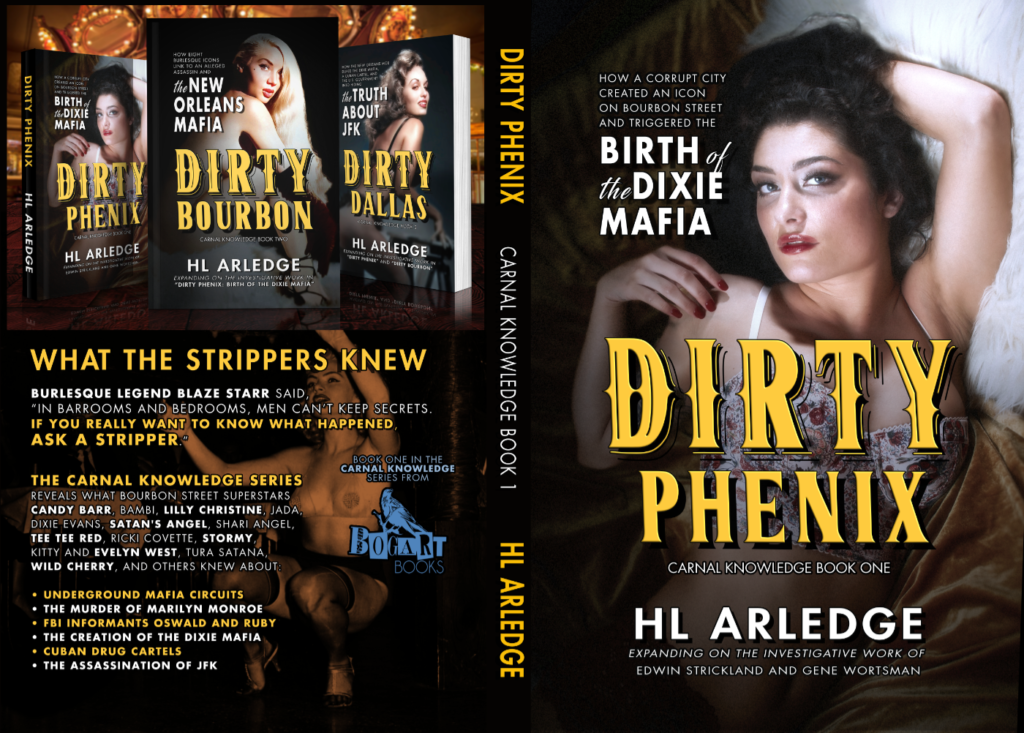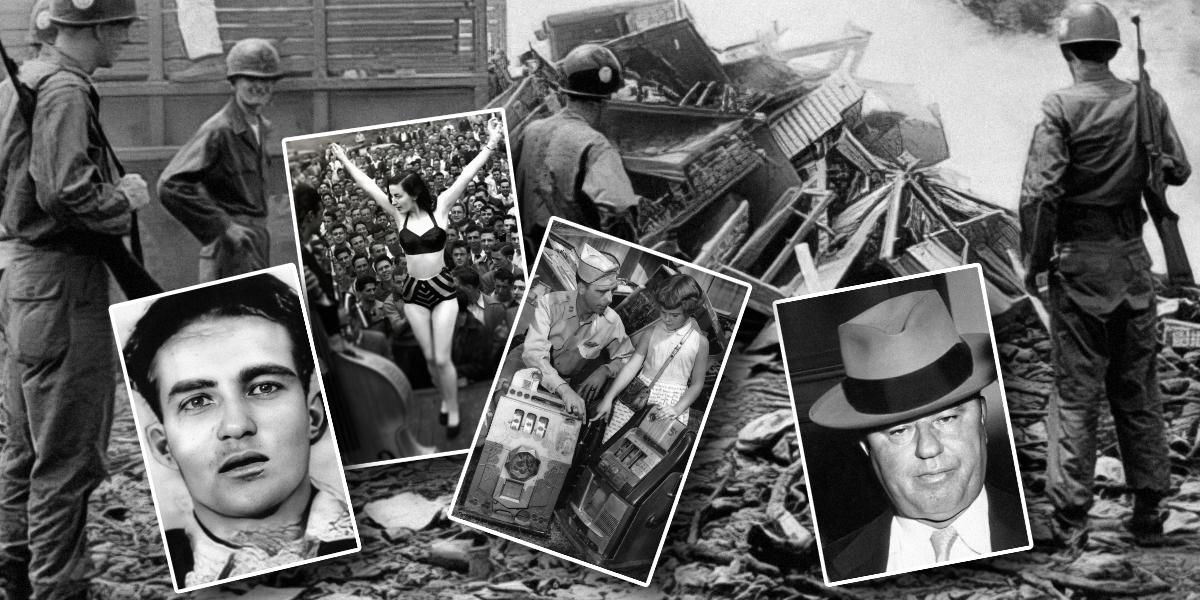New book explores News Orleans’ Dixie Mafia links
Through social media and email, readers are asking for book updates.
Last month, Bogart Books released Bayou Justice Book 3, reviewing and updating readers on South Louisiana cold cases previously examined in this newspaper column.
However, this week, we released another kind of true-crime book.
In the 1980s, I began interviewing retired police officers and service workers who worked at businesses linked to reputed organized crime families. Over time, I found those most willing to share were retired burlesque dancers and bartenders from mob-connected clubs. That interview project became the Carnal Knowledge book series, and this week, we released the first in that series, Dirty Phenix: Birth of the Dixie Mafia. Dirty Phenix expands upon the investigative work of Alabama’s top investigative journalists in the 1940s and 1950s and includes over forty photographs from the period.
As you will find in the following excerpt from Dirty Phenix, the book also examines Louisiana’s connections to the national crime syndicates and the mob in Phenix City, Alabama, in the 1940s.
Minutes before midnight, Wednesday, July 5, 1944, Joseph Gleason, a taxicab driver with a suspended license, sat alone in his car, a 1939 Mercury Eight, outside 600 Bourbon Street, watching it rain.
A truck passed, splashing water, prompting Gleason to turn up the radio as WWL newsman Don Lewis recounted the hundreds of American soldiers killed fighting German forces on Independence Day.
Joe owned the dark nightclub across the street, but inside the now locked bar, he had no customers and no radio. As the thunder and static made listening to the broadcast impossible, Joe shook his head, wondering if his luck would ever change.
In April 1941, Joe Gleason married Hazel Mae Brooks, and eight months later, she gave birth to Joe Junior at Charity Hospital. As the baby grew, Hazel Mae complained their family had outgrown their one-bedroom apartment, and she insisted they could not raise a child on a cab driver’s pay.
In 1942, Joe took on odd jobs for the Algiers Music Company and a young man named Carlos Marcello. Delivering “racehorse machines in the Eighth Police District” earned Joe the money to rent Hazel Mae a three-bedroom house at 2513 Melpomene Street.
In September 1943, Joe took ownership of The Old Opera House Cocktail Lounge at 601 Bourbon Street from a Marcello associate named Richard Conaway.
On Monday, May 29, 1944, Joe went to jail, and Hazel Mae filed for divorce.
According to The New Orleans States newspaper, that week, Deputies from the United States Marshall’s Office arrested Joe Gleason and nineteen other taxi drivers for operating cabs on illegal gasoline rations.
Marshall Commissioner R. H. Carter, Jr. told reporters, “These charges are in connection with the government’s efforts to halt black market gasoline operations which endanger the war effort and interrupt civilian gasoline supplies.”
The commissioner said the racket worked like this:
A man named Charles Lewis owned the V-8 cab company. The cab drivers did not legally work for him. They had private licenses to run their taxis. In fact, most drivers did not have the commercial for hire licenses required by law. These drivers had private plates, and none of those arrested had the certificates of war necessary to receive the supplemental gas rations provided by select gas stations.
Commissioner Carter said, “Lewis charged the drivers eight dollars per week for telephone and dispatch service. Ordinarily, taxi-for-hire services paid six dollars per week, but Lewis charged eight dollars to compensate for the added risk of servicing illegal cab operators.”
A Marcello associate named A. L. Frey paid Joe Gleason’s thousand-dollar fine, but when he returned home, Hazel Mae had taken their son and left for her mother’s.

From the New Orleans Item, March 22, 1944:
“Charged with running an extensive black market in gasoline are Joseph Bonura, Anthony Musacchia, and Carlos Marcello. They were before United States Commissioner R. H. Carter, Jr., illegally possessing gasoline coupons yesterday. The government reported that the men and a fourth, Joseph Barlatto, had in their possession 548 coupons, part of a large batch stolen from the St. John the Baptist war price and rationing board at Reserve. U. S. Attorney Herbert Christenberry said the accused connected to a filling station at 1600 Newton Street in Algiers.”
After a squawk of static, the radio announcer came back, jolting Joe Gleason back from his guilt trip.
Another car passed, splashing more water, but this one, a 1942 baby blue Desoto President with Alabama plates, poured steam from under its hood. In this rain, Joe decided the driver would need a cab soon, so he followed the Desoto.
The blue coupe died at the corner of Philip and Decatur, near an all-night Morning Call in the French Quarter.
Three gorgeous dames ran from the steaming heap to the coffee stand, and Joe grinned, watching their thin wet dresses stick to their bodies in the rain.
Perhaps, Joe thought, his luck had finally changed.
Inside the coffee shop, Joseph Gleason met Josephine Spellman, Mildred Kidd, and Helen Floyd, three gorgeous ladies from somewhere east. He told them he wanted to hire three beautiful women to bring customers to his bar. And, over a late-night breakfast, the ladies agreed to help, provided Joe forgot he ever saw the stolen 1942 baby blue Desoto President.
Next year, we continue the Carnal Knowledge series, releasing book two, Dirty Bourbon: The New Orleans Mafia. Then, in 2024, we release the third book, Dirty Dallas: The Kennedy Assassination.
Dirty Phenix, like all three Bayou Justice hardbacks, paperbacks, and ebooks, can be ordered anywhere non-fiction books are sold. In Hammond, you can also find them on the shelves at Bayou Booksellers downtown.

